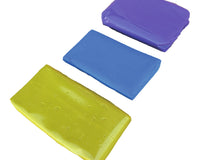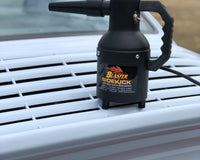The clear coat on a car is more than just a shiny layer of protection; it acts as a barrier between the paintwork and the elements. Over time, exposure to sunlight, weather, road grime, and poor maintenance habits can cause the clear coat to fade, peel, or become chalky. For older vehicles, this issue is especially common, as protective coatings may not have been applied regularly and the paint system itself may have endured years of neglect. A faded clear coat diminishes the overall look of a car, making it appear older and less valuable than it truly is. Restoring it not only revives the visual appeal but also safeguards the underlying paintwork from further deterioration.
Many drivers mistakenly believe that once the clear coat has failed, a full respray is the only solution. While in some severe cases repainting may be required, in many others, careful restoration techniques can bring back depth, gloss, and durability without the need for expensive body shop work. The key is identifying the condition of the existing clear coat and applying the right combination of cleaning, sanding, polishing, and protective treatments to restore the finish. This process requires patience, attention to detail, and the correct products, but the results can be transformative for an older car.
In this article, we will explore why clear coats fade, the steps involved in restoring them, and how to maintain that restored shine for years to come. Whether you are working on a cherished classic, a reliable daily driver, or a company fleet vehicle, learning how to restore faded clear coat effectively will save money, improve appearance, and extend the lifespan of the paint system.
Why Clear Coats Fade Over Time
The Role of UV Damage
Ultraviolet rays from the sun are the number one enemy of clear coats. Over years of exposure, UV light breaks down the chemical bonds within the clear coat, leading to oxidation. This results in a dull, cloudy appearance that robs the car of its original deep gloss. If left unchecked, UV damage can progress to cracking and peeling, at which point restoration becomes more complex.
Environmental Contaminants and Neglect
Clear coats also suffer from contaminants such as bird droppings, tree sap, road salt, and industrial fallout. These substances can chemically react with the surface, creating etching and further weakening the protective barrier. Poor washing techniques, such as using harsh detergents or abrasive brushes, can accelerate the damage by wearing away the clear coat prematurely. For older vehicles, decades of neglect can combine these factors, leaving the paintwork in desperate need of restoration.
Mechanical Wear and Age
Regular wear and tear also contribute to faded clear coats. Improper polishing, automatic car washes with stiff brushes, and stone chips all eat away at the surface. Over time, even without severe damage, the clear coat naturally thins and loses its effectiveness. This gradual decline is why older vehicles are particularly vulnerable to faded, patchy finishes that require careful correction.
Assessing the Condition Before Restoration
Before attempting to restore a faded clear coat, it is important to assess the current condition of the paintwork. If the clear coat is merely oxidised but intact, restoration is achievable through cleaning, sanding, and polishing. However, if the clear coat is peeling, flaking, or showing deep cracks, a full respray may be necessary, as no amount of polishing can repair missing sections.
A simple test is to wash and dry the vehicle, then inspect the surface under direct light. If you see cloudy or chalky areas but no peeling, you are dealing with oxidation, which can be corrected. If the clear coat is visibly lifting or separating from the paint, sanding and repainting will be required. Identifying the correct situation prevents wasted effort and ensures you choose the right approach for your car.
Step 1: Thorough Cleaning and Decontamination
Restoring a clear coat begins with a clean surface. Washing the car thoroughly with a pH-neutral shampoo removes dirt, grime, and loose contaminants. For older vehicles, it is also important to use a clay bar treatment to remove bonded contaminants such as tar spots, industrial fallout, and embedded dirt. This step ensures the surface is smooth and free from particles that could interfere with sanding and polishing.
Decontamination not only prepares the car for the restoration process but also allows you to see the true extent of the faded clear coat. Dirt and contaminants can exaggerate the severity of the oxidation, so a freshly cleaned vehicle gives you a realistic starting point. This step should not be rushed, as skipping proper cleaning often leads to uneven results during the polishing stages.
Step 2: Wet Sanding for Severe Oxidation
For cars with heavily faded clear coat, wet sanding is often required to level the surface and remove the oxidised layer. Using fine-grit sandpaper (typically 1500–3000 grit), the surface is sanded gently with water to prevent overheating or scratching. This process gradually removes the damaged outer layer of clear coat, revealing a fresher, healthier surface underneath.
Wet sanding requires patience and a careful touch, as removing too much clear coat can damage the paint system entirely. Working in small sections is recommended, constantly checking progress and ensuring even sanding across the panel. Once complete, the surface will appear dull, but this is normal—it is the foundation for polishing to restore gloss.
Step 3: Machine Polishing for Gloss Restoration
After sanding, polishing becomes the key step in reviving the clear coat. A dual-action polisher with the appropriate pad and compound can remove the sanding marks and restore depth and shine to the surface. For mild oxidation where sanding is not necessary, machine polishing alone may be sufficient to bring back gloss.
The polishing process works by smoothing the microscopic scratches on the surface, allowing light to reflect more evenly and giving the car a glossy finish. Multiple stages may be required, starting with a cutting compound to correct imperfections, followed by a finishing polish to refine the surface. Polishing not only restores the shine but also enhances the clarity of the underlying paint colour.
Step 4: Applying Protective Coatings
Once the clear coat has been restored through sanding and polishing, it is essential to protect it from future damage. Wax, sealants, or ceramic coatings can provide a barrier against UV rays, water spots, and contaminants. For older vehicles, ceramic coatings are highly recommended, as they offer long-term durability and hydrophobic properties that reduce the need for frequent maintenance.
Protective coatings not only lock in the restored gloss but also make future cleaning easier. They create a smooth, slick surface that repels dirt and water, helping the car stay cleaner for longer. Without this step, the restored clear coat may fade again quickly, undoing all the hard work put into the restoration process.

Maintenance Tips to Keep Clear Coat Looking Fresh
Regular Washing and Drying
To maintain the restored clear coat, adopt proper washing techniques. Use a two-bucket wash method with microfibre mitts to avoid scratches, and always dry the vehicle with a clean, soft towel to prevent water spots. Frequent washing prevents contaminants from embedding into the clear coat and extends the life of protective coatings.
Avoiding Harsh Chemicals
Stay away from abrasive cleaners or household detergents, as these can strip protective layers and accelerate fading. Always use products formulated for automotive paintwork to ensure the clear coat remains intact. For older cars, gentle care is even more important, as the paint system is already thinner and more vulnerable.
Reapplying Protection
Protective layers such as wax or ceramic coatings should be reapplied periodically to maintain their effectiveness. While waxes may need reapplication every few months, ceramic coatings can last years with proper care. Reapplying protection ensures the clear coat continues to resist UV rays, oxidation, and environmental contaminants.
Conclusion: Bringing Back the Shine on Older Cars
Restoring a faded clear coat on older vehicles is a process that requires time, care, and the right techniques, but the results are well worth the effort. By assessing the condition of the paint, thoroughly cleaning, wet sanding if necessary, polishing, and applying protective coatings, you can revive the gloss and protect the finish for years to come. For car enthusiasts, this process not only improves aesthetics but also preserves the heritage and value of older vehicles.
With consistent maintenance and proper protection, even an ageing car can look fresh, glossy, and well cared for. Rather than accepting faded paint as inevitable, learning how to restore and maintain the clear coat gives owners the power to keep their vehicles looking professional and attractive. A restored clear coat is more than just a cosmetic upgrade—it is a commitment to preserving the life and legacy of the car.




